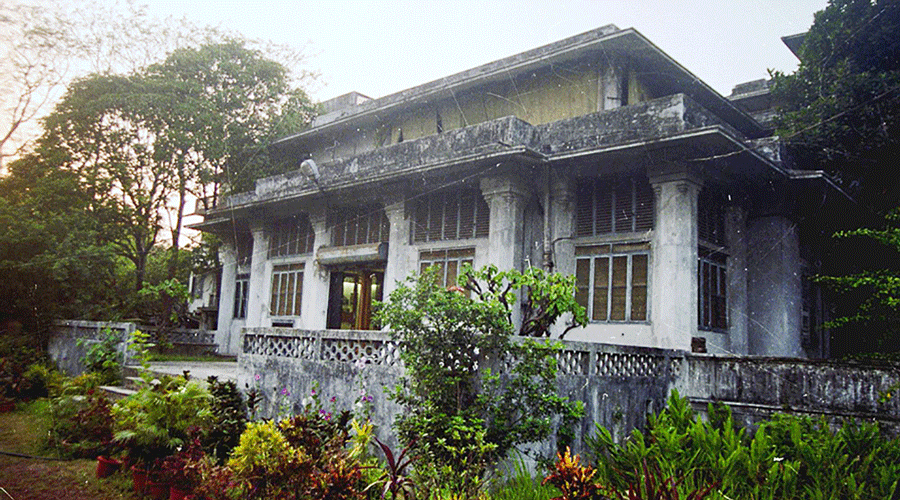A daylong seminar was held at the Indian Statistical Institute (ISI), Kolkata, to address the challenges it faces while trying to restore Amrapali, the residence of its founder and the doyen of Indian statistics Prasanta Chandra Mahalanobis.
The quaint two-storey 19th century structure, which housed the Prasanta Chandra Mahalanobis Memorial Museum and Archives (PCMMA), is in a shambles and is closed to the public.
ISI is now seeking expert opinion before it floats a request for a proposal to restore the structure on the Baranagar campus of the institute.
The Telegraph had reported on the precarious state of Amrapali in September 2018. Chunks of concrete were coming off from the cornices and banyan saplings sprouted from every nook and corner.
ISI has since progressed little on restoring the building, which is not a graded heritage structure.
The institute has a budget of Rs 15 crore for its restoration, Avijit Ganguly from the ISI’s engineering department told the seminar.
Among those who attended the meet were Reena Dewan, president of the International Council of Museums, India, and conservation architect Manish Chakraborti.
They shared their experiences and insight on the challenges of restoring museum buildings.
“The aim of the seminar was to seek opinions from different professionals about the restoration of Amrapali and its future use. We are going to place a request for a proposal to restore Amrapali, select a consulting architect who specialises in this kind of work and find out the best way to restore the house,” said Kishor Satpathy, in charge of the library of the ISI, which oversees Amrapali.
The proposal for restoration will be placed before the ISI council on March 21.
ISI was started by Mahalanobis from Baker’s Hall at the then Presidency College in 1931. In 1940, he bought a plot of land in Baranagar on the northern fringes of Kolkata along with a two-storey house that overlooks a pond.
He renovated it and Rabindranath Tagore, with whom Mahalanobis and his wife Nirmal Kumari shared a close relationship, named it Amrapali. Two of the best rooms of the house were refurbished and reserved for Tagore but he was already in poor health and could not stay in the house that he had named.
From 1941-1951, ISI Research Training School was administered from Amrapali. The archives has a letter written by Mahalanobis to his wife on July 13, 1941, about the plans for Amrapali. The archives also has old plans of the ground floor, the first floor and extension of Amrapali.
What is befuddling ISI engineers working on the restoration of the building is the number of additions and extensions that have been done on Amrapali over the years. “The original house that Mahalanobis bought is much less distressed than the additions that have been made to it from time to time. The added rooms and toilets were not done following proper norms. These additions are in a precarious state. Till date, I don’t know how many toilets there are in Amrapali,” said Ganguly.
When The Telegraph visited Amrapali, there was a bathtub under the staircase done up with mosaic tiles.
“Mahalanobis had renowned guests and international scholars visiting him, like Nobel Laureate Irene Curie, statistician Robert Fisher, Pamela Robinson, Jawaharlal Nehru. He had to make accommodations for them at his home, which explains the additions. The kitchen had cutlery from all over the world and the guests were served in cutlery of the country from which they came,” said Satpathy.
Nirmal Kumari’s bath with coloured designed tiles was also a remodelled work. Panels of sheetalpati on the walls of the house that acted as a natural air conditioner might have been added.
While the ground floor housed the galleries on Mahalanobis’s life and work, the first floor had been preserved the way the couple lived.

